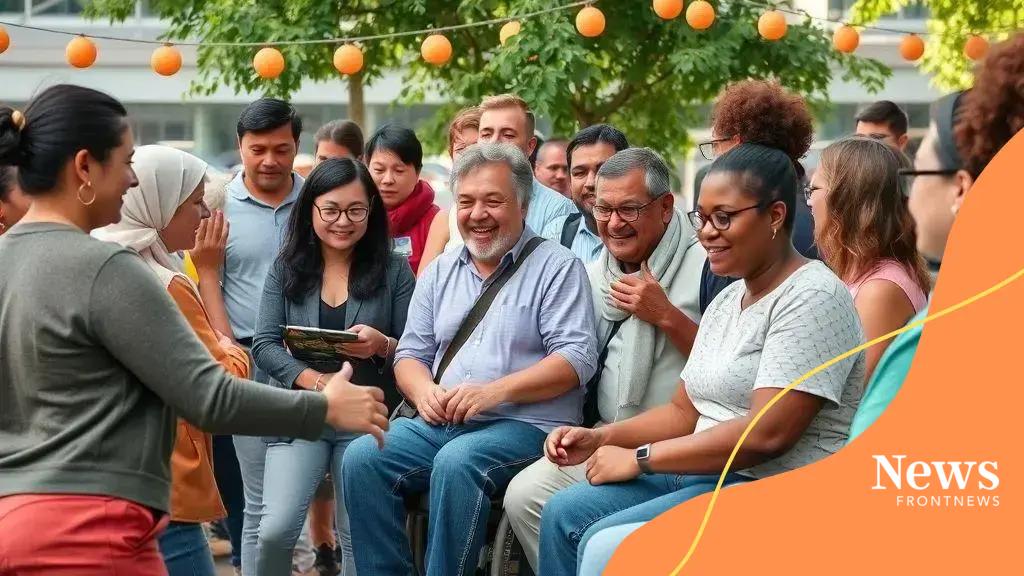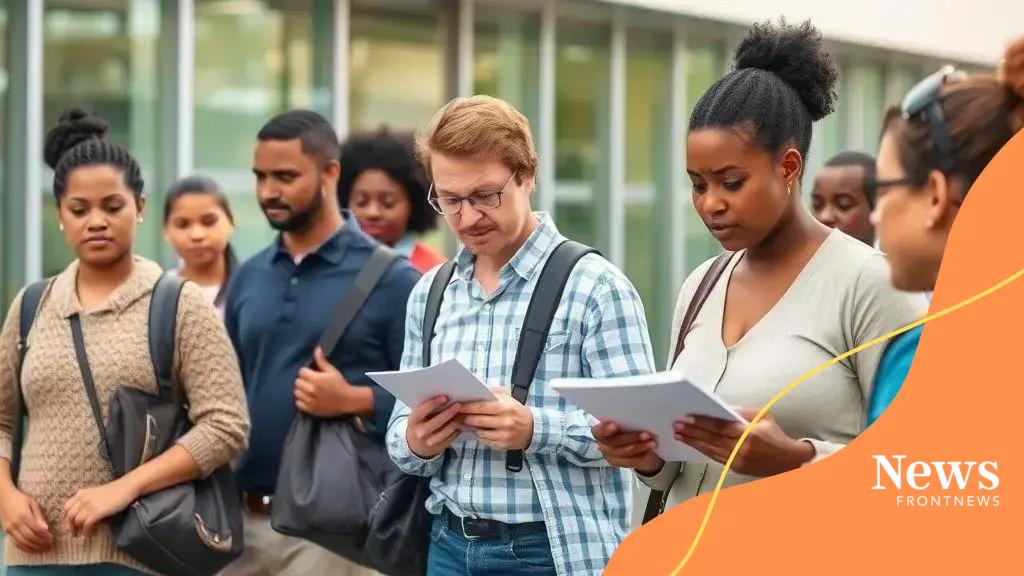PublicBenefitAccess: Unlocking resources for community growth

Public benefit access is crucial for supporting individuals and families in need by providing essential resources like food assistance, healthcare, and housing support, helping them achieve stability and improve their quality of life.
PublicBenefitAccess is a crucial aspect of fostering community growth and fairness. Have you ever wondered how equitable access to resources can transform lives? In this article, we will dive into the significance and challenges faced in achieving this access.
Understanding public benefit access
Understanding public benefit access is vital for ensuring that everyone has the opportunity to thrive. Many individuals and families rely on public benefits, yet accessing these resources can sometimes be challenging.
The Basics of Public Benefit Access
Public benefit access involves various programs designed to aid those in need. These programs may include food assistance, healthcare, housing support, and educational resources. It is essential to know what benefits are available and how to qualify for them.
Key Programs to Know
- Supplemental Nutrition Assistance Program (SNAP)
- Medicaid for healthcare coverage
- Housing assistance programs
- Temporary Assistance for Needy Families (TANF)
Each program serves different segments of the population and caters to specific needs. Understanding eligibility requirements is key to accessing these benefits successfully.
Moreover, it is important for communities to raise awareness about these programs. Many who qualify may not know they’re eligible. For example, outreach initiatives can help inform individuals about how to apply and receive assistance.
Barriers to Access
Despite the available resources, barriers to public benefit access still exist. Common challenges include lengthy application processes, lack of information, and complicated eligibility criteria. Addressing these issues can significantly improve access for those in need.
By simplifying applications and providing clearer information, organizations can create a more supportive environment for potential beneficiaries. Educating the public about these resources can lead to a more equitable society.
Ultimately, understanding public benefit access is the first step in ensuring that all individuals receive the support they need. With more effective communication and action from both the government and community organizations, the barriers can be reduced.
Importance of equitable resource distribution
The importance of equitable resource distribution cannot be overstated. When resources are allocated fairly, communities can thrive, and individuals can access the support they need to succeed.
Equitable distribution means that everyone has a chance to benefit from available programs and resources. This approach promotes fairness and helps eliminate disparities. Community members often face barriers that hinder their access to essential services, so addressing these issues is crucial.
Benefits of Equitable Distribution
When resources are shared fairly, several positive outcomes emerge:
- Reduction of poverty rates
- Improved health outcomes
- Increased educational opportunities
- Stronger community ties
Such benefits lead to a broader impact on society. By ensuring that everyone can access similar resources, we can foster stronger, more resilient communities.
Additionally, equitable resource distribution can lead to increased participation in community programs. When people see that they can benefit, they are more likely to get involved. This participation contributes to the vibrancy of the community and encourages collaboration.
Challenges in Achieving Equity
Despite the clear benefits, achieving equity is not without challenges. Structural barriers can impede access to resources. Factors like socioeconomic status, race, and location play significant roles in how resources are distributed.
Communities can work together to identify these challenges and create solutions. Advocacy efforts are essential in pushing for policies that promote fair distribution. Local organizations can play a pivotal role by raising awareness and providing support.
In summary, equitable resource distribution is integral to building stronger communities. By understanding the importance of fair access, communities can work together to support one another more effectively and ensure everyone has the chance to thrive.
Challenges in accessing public benefits

Accessing public benefits can present various challenges for individuals and families. Despite the existence of support programs, many struggle to receive the assistance they need due to a range of obstacles.
One significant challenge is the complex application process. For many, the forms can be confusing and overwhelming. A lack of clear instructions adds to the difficulty, making potential beneficiaries hesitant to apply. Moreover, long wait times for responses can discourage individuals from pursuing these benefits.
Common Barriers
Several barriers can impede access to necessary resources:
- Limited knowledge: Many individuals are unaware of the benefits they qualify for or how to apply.
- Cultural and language differences: Non-native speakers may face challenges in understanding the application process.
- Technical issues: Online applications can pose problems for those without reliable internet access or digital literacy.
- Stigma: Some people feel embarrassed or shame when seeking assistance, leading them to avoid applying altogether.
These barriers contribute to underutilization of available programs, leaving many without vital support. Raising awareness about public benefits and their importance is crucial for overcoming these challenges.
Additionally, some individuals may find the eligibility requirements restrictive. For example, income thresholds can exclude those who still struggle financially but do not qualify based on rigid criteria. Advocacy for more flexible guidelines can help address this issue.
Strategies for Improvement
To improve access to public benefits, local organizations can play a pivotal role in guiding individuals through the application process. Offering workshops and one-on-one assistance can help demystify the steps involved. Providing materials in multiple languages can also enhance understanding and accessibility.
By recognizing and tackling these challenges head-on, communities can ensure that more individuals have the opportunity to benefit from essential programs. Improved access to public benefits can lead to healthier, more stable lives for everyone in the community.
Strategies to improve benefit access
Improving access to public benefits is essential for ensuring that individuals and families receive the support they need. Several strategies can be implemented to enhance the process and reach more people.
One effective approach is community outreach. By actively engaging with the community, organizations can inform individuals about available benefits and how to apply. This outreach can include workshops, informational sessions, and distributing easy-to-understand materials that explain the application process.
Effective Outreach Strategies
Some strategies for effective outreach include:
- Partnering with local organizations to host events.
- Using social media to spread awareness.
- Creating multilingual resources to cater to diverse populations.
- Setting up mobile assistance units to reach remote areas.
Another important strategy is simplifying application processes. Many people find public benefits applications confusing and daunting. Streamlining these forms and reducing the amount of paperwork can encourage more individuals to apply.
Providing technical assistance is also crucial. Individuals who are not tech-savvy may struggle with online applications. Offering in-person assistance or helplines can make a significant difference, ensuring that everyone has access to the necessary support.
Training and Support for Staff
Training staff on the various benefits available and their eligibility requirements can lead to better service for applicants. When staff members understand the programs thoroughly, they can provide more accurate assistance and guidance to individuals seeking help.
Advocating for policy changes is another vital strategy. Engaging with lawmakers to promote legislation that supports easier access and more inclusive eligibility criteria is critical. This advocacy can create a larger impact on the community by ensuring that everyone has an opportunity for support.
With these strategies, improving access to public benefits becomes more feasible. By actively engaging communities, simplifying processes, and advocating for change, more individuals can benefit from the resources available to them.
Real-life success stories in public benefit access
Real-life success stories in public benefit access highlight the positive impact that these programs can have on individuals and families. Hearing about these experiences can inspire others to seek help and utilize available resources.
One notable story involves a single mother named Sarah. After losing her job, Sarah found it difficult to support her three children. She learned about the Supplemental Nutrition Assistance Program (SNAP) through a community workshop. With assistance, she applied and began receiving benefits that helped her provide healthy meals for her family.
Inspiring Individual Journeys
Several success stories emphasize the transformative effect of public benefits:
- Emily’s Recovery: After a serious illness, Emily faced mounting medical bills. She applied for Medicaid and received essential healthcare services that aided her recovery and allowed her to return to work.
- James and Housing Assistance: After facing eviction, James sought help through a local housing program. With the resources he received, he found stable housing and secured a job, which led him to financial stability.
- Maria’s Educational Support: Maria, a high school student, accessed after-school programs funded through public grants. This support not only improved her grades but also opened doors to scholarships for college.
These stories demonstrate how public benefits can change lives. They also reinforce the importance of outreach and education about available resources. Many individuals may not realize they qualify for assistance, which is where community programs can make a difference.
In addition to personal growth, these stories often highlight the role of community organizations. They provide guidance, support, and advocacy for those navigating the system. By sharing success stories, these organizations encourage others to take the first step toward accessing benefits.
Overall, real-life success stories serve as powerful reminders of the potential that public benefit access holds for individuals and families in need. By spotlighting these journeys, we can inspire hope and action in others.
FAQ – Frequently Asked Questions about Public Benefit Access
What are public benefits?
Public benefits are programs that provide financial assistance and resources to individuals and families in need, such as food aid, healthcare, and housing support.
How can I apply for public benefits?
You can apply for public benefits by visiting your local government office, using online applications, or attending community workshops that offer guidance on the application process.
What challenges do people face when accessing public benefits?
Common challenges include complicated application procedures, lack of awareness about available resources, and language barriers.
How do success stories help improve public benefit access?
Success stories inspire others to seek help and showcase the positive impact of public benefits, which encourages more people to apply for assistance.





